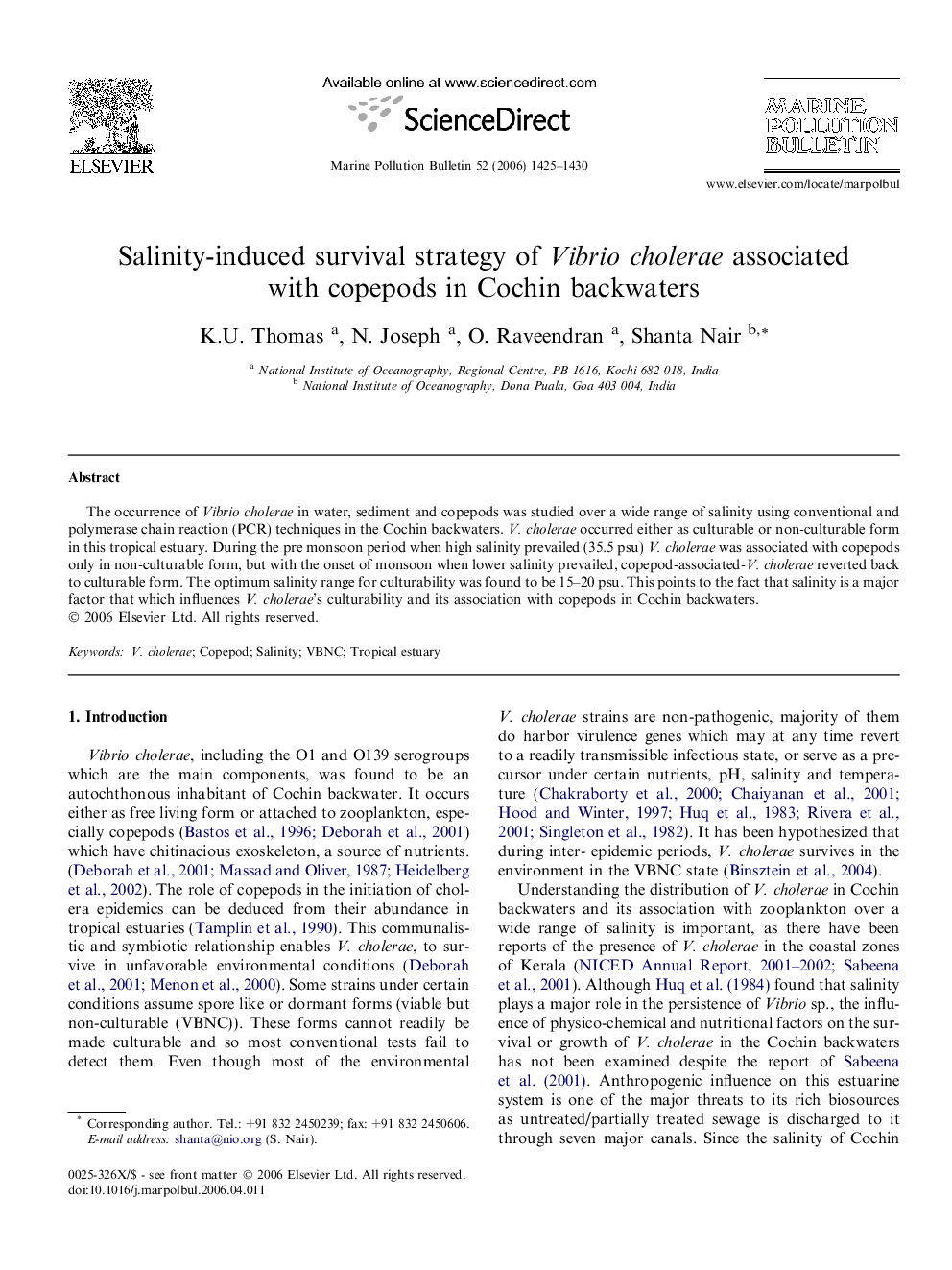| Article ID | Journal | Published Year | Pages | File Type |
|---|---|---|---|---|
| 4478058 | Marine Pollution Bulletin | 2006 | 6 Pages |
The occurrence of Vibrio cholerae in water, sediment and copepods was studied over a wide range of salinity using conventional and polymerase chain reaction (PCR) techniques in the Cochin backwaters. V. cholerae occurred either as culturable or non-culturable form in this tropical estuary. During the pre monsoon period when high salinity prevailed (35.5 psu) V. cholerae was associated with copepods only in non-culturable form, but with the onset of monsoon when lower salinity prevailed, copepod-associated-V. cholerae reverted back to culturable form. The optimum salinity range for culturability was found to be 15–20 psu. This points to the fact that salinity is a major factor that which influences V. cholerae’s culturability and its association with copepods in Cochin backwaters.
